
Since this winter I’ve been experimenting with growing edible mushrooms both indoors and outdoors. Recently, I joined forces with a few other interested folks to attempt a technique called PF Tek that we learned about in a class taught by Peter McCoy. We grew oyster mushrooms, the Angelyne of fungi.
Growing oyster mushrooms is a four step process:
- Harvest spores or clone tissue and grow out in a petri dish. This must be done in a sterile environment, usually with a laminar flow hood. I have not tried this yet and it’s the most difficult part of growing mushrooms. Thankfully you can skip this step by purchasing liquid culture online.
- Take your liquid culture and inoculate grain, in mason jars, sterilized in a pressure canner. Someone in our little growing group purchased the liquid culture for around $10 for a syringe that was more than enough to inoculate 14 pint jars .
- When the grain in the jars is fully colonized, you use it to inoculate bags of straw that have been pasteurized in hot water. I think we ended up with something like 16 small bags of straw divided between our group.
- Keep the bags inoculated in step 3 in a humid environment with some indirect light and wait for them to fruit.
This all sounds a lot harder than it actually was. Oyster mushrooms have a reputation for easily out-competing molds that can tank other mushrooms. The culture we used in step 2 aggressively colonized the grain (we used sorghum bird seed called milo) as well as the straw. If anything the problem I had is that it went faster than I expected. Once the jars are colonized you have to move the grain to straw. Nature has a tendency not to care about human schedules.
Hot Pink Results
Some observations from this last experiment. We chose pink oyster mushrooms because they tolerate heat and will grow well at this time of year here in sunny and hot Southern California. I can report that, despite what some have told me, pink oyster mushrooms are delicious and do, in fact, have a vague ham or bacon flavor. While they lose their vibrant pink color when you heat them, they are still a colorful yellow hue after cooking.
So far I’ve grown pearl, blue and pink oyster mushrooms. My favorite for flavor and texture was the pearl oyster but the other two are a very close second. I’m going to grow pink oyster mushrooms again soon and like that you can grow them here in the summer.
I need to improve step 4. The difficulty with getting mushrooms to fruit is that they benefit from humidity and oxygen–you can’t just put them in a bag with no ventilation. While I’ve grown mushrooms outside without any kind of humidity control, I think I’d get bigger mushrooms with some kind of fruiting chamber. A lot of people make what’s called a Martha, named after a Martha Stewart mini greenhouse. I’m of two minds about this kind of thing. I’d like slightly better results but also like to avoid gadgets and plastic. But with three successful growing experiments, I’m leaning towards the Martha.
I might try growing pink oyster mushrooms on the oak sawdust I generate in my woodshop. I grew blue oyster on sawdust and I found it easier to work with than the straw. Straw has to be shredded and I found it hard to pre-moisten and pasteurize. With the sawdust I just poured boiling water over it in a tote and let it cool overnight. But I’ve also heard some say that oyster mushrooms grow better on straw. I guess I need to do a side by side experiment and find out.
While it was handy to have an outdoor area to shred the straw, one of the things I like about growing mushrooms is that you can do it in an apartment. I’ll also add that it was fun to do it with a group of friends. We got together to do the pressure canner step together and I was able to use my backyard to shred straw for the folks who didn’t have outdoor space.
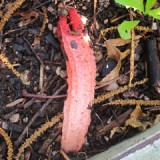
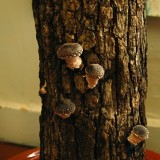
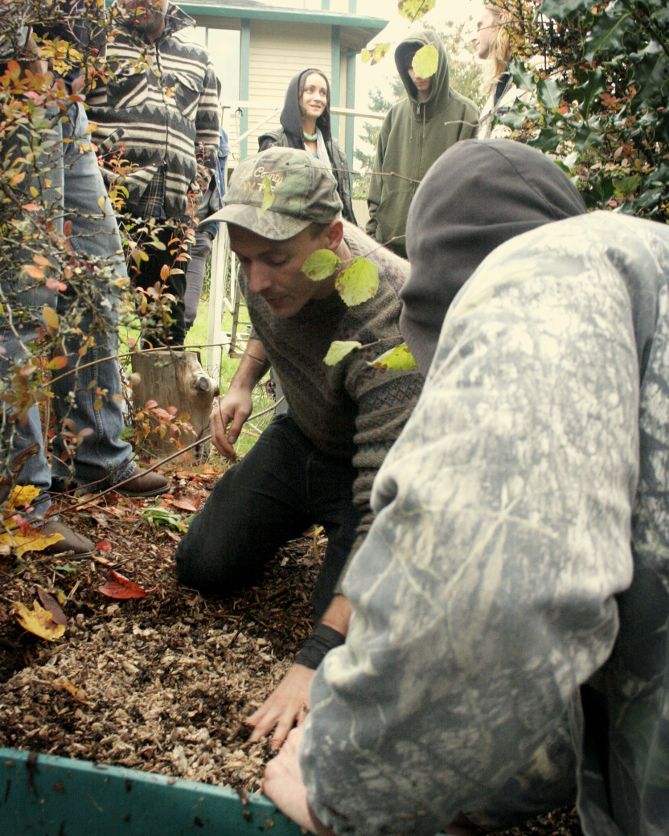
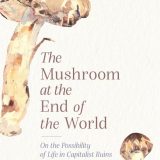
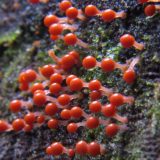
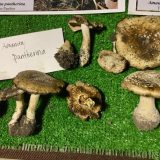
The oyster mushrooms are beautiful, the idea of growing them intriguing, but I cannot see past that stove in the background! I think it is just like the one in our house.
It’s a beautiful stove but not mine–I was pet sitting for friends in Pomona when I took this photo. I took half of my mushrooms with me and left the other half for Kelly. We also have an O’Keefe and Merritt stove but a smaller model.
Some varieties of mushrooms yield beautiful colors in a natural dye process. If you try this, it would be interesting to read about.
This is such a great idea that I had not though of. I’d be reluctant to use these delicious mushrooms for dye but some Googling turned up a lot of wild species that make some amazing dyes: https://namyco.org/selection_of_mushrooms_for_color.php. Thanks for the tip!